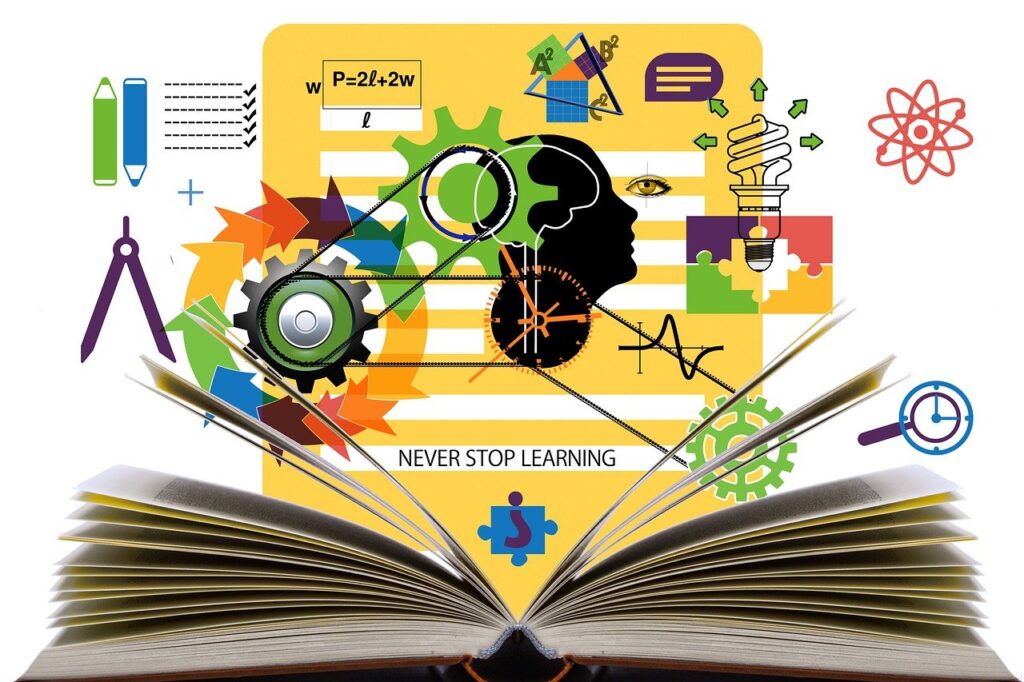Do you ever dream of learning a new language, mastering a new skill, or diving deeper into a fascinating topic?
For many adults, these aspirations get pushed aside. Juggling work, family, and personal commitments can leave precious little time for learning. Financial limitations might also feel like a barrier. And let’s be honest, sometimes self-doubt creeps in, making us question our ability to learn new things.
Don’t let these obstacles hold you back! This guide provides practical solutions to overcome these challenges, reignite your love of learning, and make lifelong learning a reality
Challenges of Adult Learning in the Digital Age
Time Crunch :One of the main problems for adults in learning is finding the time to learn.
Here are some techniques to help with that
Timeboxing technique
This is a powerful technique that improves focus and energy.
It is simply done by setting a predetermined time limit for a task. Rather than working indefinitely, now you sprint towards completion within the fixed duration.
For instance, facing a daunting pile of emails, you allocate only 20 minutes to tackle them effectively. This method transforms overwhelming tasks into manageable chunks, helping productivity and efficient time management.
Eisenhower Matrix for task classification
This is all about selecting urgent and important tasks Matrix.
Do urgent & important tasks first, schedule important ones, delegate/eliminate the rest.
Amelia applied timeboxing with the Eisenhower Matrix to categorize her work-related projects by urgency and importance. She allocated dedicated time slots for tasks within each quadrant, which helped effectively manage her workload and boost productivity in her professional endeavors.
Use microlearning opportunities
Divide learning into manageable segments. Utilize your commute for podcast episodes, dedicate lunch breaks to brief online courses, or read industry articles during downtime.
Micro-learning can be seamlessly integrated into daily routines, using commutes, lunch breaks, or even downtime for quick knowledge bursts. Small, consistent efforts add up and you can achieve significant learning goals over time.
You can tailor Micro-learning to Your Needs by selecting your preferred learning style (visual, auditory, kinesthetic) and choose micro-learning formats that cater to those styles.
Explore podcasts, online courses, YouTube channels, mobile apps, newsletters, e-books, flashcards, and social media for micro-learning opportunities.
Resources for time management apps and tools
Efficiently manage tasks with free apps like Google Calendar and Todoist, stay focused using Focus Keeper’s timed intervals, and gamify breaks with Forest. Conquer your day with these essential productivity tools.
Motivation Meltdown
Sometimes the initial excitement for learning wanes. Hitting a roadblock or facing setbacks can leave you feeling discouraged and zap your motivation. The fear of failure makes you question your abilities and tempts you to give up.
But developing a “growth mindset” – the belief that skills can be learned and improved – empowers you to bounce back. Welcome challenges, and learn from mistakes. Believe in growth through effort and overcome fear by reframing challenges. Envision success and celebrate progress, knowing small steps lead to significant growth.
As Nelson Mandela said, “Education is the most powerful weapon which you can use to change the world.”
Set yourself up for success with SMART goals: Specific, Measurable, Achievable, Relevant, and Time-bound. Knowing your “why” – the deeper purpose behind your learning – keeps you going. Celebrate milestones, no matter how small, to build momentum. Momentum drives motivation. Find an accountability partner to share your progress and stay on track. Remember, every successful learner has faced challenges – you can too!
Challenges with Technology:
Digital Divide: Bridging the digital divide by addressing the gap in access to technology and the internet. Solution: Free online resources and courses can equip you with essential digital skills, closing the gap and unlocking a world of learning opportunities.
Accessibility barriers: Hindering technology access for individuals with disabilities.
Solution: Learning shouldn’t be limited by limitations. Explore alternative formats that cater to different needs. Audiobooks help auditory learners and people with visual impairments. Text-to-speech software aids those with dyslexia by converting written content to audio. Closed captions and transcripts make video learning accessible for those with hearing difficulties.
Lack of tech support for navigating digital tools
Solution: You don’t have to go it alone! Leverage the power of your support system. Tech-savvy friends, family, or even librarians can be invaluable resources. Online communities also provide guidance from experienced learners. Embrace technology with your support team and find your groove!
Financial Hurdles
Don’t let finances be a roadblock on your learning journey! The beauty of adult learning is its affordability. Here are some tips to keep your brain buzzing without breaking the bank:
Free Resources:
Public libraries are your best friend! Borrow books, audiobooks, and even access online courses and workshops – all for free.
Explore websites such as Coursera, edX, and Khan Academy, which offer a wide array of free Massive Open Online Courses covering diverse subjects. These platforms provide access to high-quality educational content from top universities and institutions worldwide. Additionally, websites like Udemy and FutureLearn offer free or low-cost courses on various topics. That allows learners to enhance their skills and knowledge without financial barriers.
Webinars are another fantastic option, often providing valuable insights on current trends. Government programs and scholarships specifically cater to adult learners – check if you qualify!
Investment, Not Expense: Think of learning costs as an investment, not an expense. Upgrading your skills can unlock doors to promotions, career shifts, or even starting your own business – all leading to a brighter financial future. By investing in yourself, you’re investing in long-term success. Remember, knowledge is power, and the power to learn is priceless.
Struggling with financial constraints, Maria was determined to pursue her passion for graphic design. Despite the odds, she tapped into free resources like public libraries and online platforms to hone her skills in digital illustration and graphic design software. Recognizing education as an investment, Maria not only mastered her craft but also showcased her talent through freelance projects and online portfolios. Her resilience and creativity illustrated that with determination. Financial obstacles couldn’t hinder her path to becoming a successful graphic designer.

Strategies to Spark Motivation and Rekindle the Love of Learning
The Power of Personalization
To reignite enthusiasm for learning, it’s vital to personalize the educational experience to suit individual learning styles.
Understand Your Learning Styles: People have diverse ways of learning. Common styles include visual (preferring visual aids), auditory (favoring verbal explanations), and kinesthetic (enjoying hands-on activities).
Self-Assessment Tools: Learning isn’t one-size-fits-all. Take a free online quiz to discover your learning style – visual, auditory, or kinesthetic These assessments shed light on how they best absorb and retain information.
Tailored Learning Resources: These offer a range of resources tailored to different styles. For visual learners, use videos and infographics. Auditory learners benefit from audiobooks and podcasts. Kinesthetic learners thrive with hands-on workshops and interactive activities.
By adapting educational approaches to accommodate various learning styles, individuals can rediscover their passion for learning.
Find Your Learning Tribe:
Learning is more fun (and effective!) with others! Join social media groups or online communities focused on your learning goals. Instantly tap into a global network of learners who share your passion – you can exchange resources, pose questions, and get inspired by others on the same path.
Sarah, struggling with her online coding class, discovered a vibrant coding community forum. Suddenly, complex algorithms felt less daunting, replaced by a network of encouraging peers ready to help. (Isolation overcome by a supportive online learning community)
Virtual Coworking Benefits: Feeling isolated working from home? Virtual co-working spaces offer a structured online environment to learn alongside others. Stay accountable and boost productivity with a supportive virtual community.
Local Gems Don’t Disappoint: Don’t forget the power of your local scene! Libraries often host workshops, and Meetup groups gather around shared interests. Explore local learning opportunities – the connections you make can fuel your learning journey!
David, hesitant about returning to school after a long break, found a local learning group for aspiring writers. Sharing his work with a friendly group sparked a renewed passion for storytelling. (Fear of inadequacy dispelled by a local learning community)
Make it Relevant and Rewarding
Learning isn’t a one-time event; it’s a continuous voyage of discovery. Knowledge evolves, and mastery takes sustained effort. But remember, “small drops accumulate and make a pond” – every bit of progress counts!
Embrace Every Success: Celebrate your milestones, big or small! Completing a course module, mastering a new skill, or simply showing up and studying – these all deserve a reward. Treat yourself to something you enjoy, reinforcing positive learning habits and keeping you motivated.
Connect to Your Why: Anchor your learning in real-world goals. How will this new knowledge benefit your career? Will it help you solve a personal challenge? A clear purpose keeps you focused and prevents learning from feeling like a chore.
Bridge the Gap: Don’t let knowledge remain theoretical. Seek out learning opportunities that bridge the gap between theory and practice. Look for courses with real-world case studies, projects that tackle industry challenges, or online tutorials offering practical problem-solving steps.
By applying these tips, you can transform your learning journey into a fulfilling and rewarding experience – a lifelong adventure fueled by curiosity, progress, and celebration!
The Power of Reflection
Socrates said “The unexamined life is not worth living.”
Self-reflection and introspection are essential for leading a meaningful and virtuous life.
Writing in a journal helps direct our thinking, because we need to clarify our thoughts during the process. It serves as a tracking tool for our progress. It enhances creativity, helps finding recurring challenges. Besides emotional release, writing daily experiences helps identify time-wasters and recognizing knowledge gaps.
With regular reviews, we can see our progress. Then we can evaluate and adjust strategies, do more of what works and eliminate what does not work.
These kind of questions may help:
- Why do I want to learn what I want to learn? What is my purpose?
- What is the scope? To what level do I want to take my knowledge? Expert ? Intermediate?
- How do I know I reached my goal of learning, what is the criteria?
- What is the most critical and most relevant 20% of learning material that covers 80% of the knowledge?
- What are my resources?
- What is the best use of my time today, this week or month?
Overcoming Information Overload
During the last half century the rate of information continuously increased. The Internet made sharing of information much easier. Before where only qualified people could publish their content now everybody can broadcast their views on free social media channels. With removal of quality control mechanisms the result was a dramatic decrease in the quality of information.
In this information society, we need to keep up with the new technologies, news and continuously learn to survive.
How can we deal with this?
Prioritize Credible Sources: Focus on accessing information from reliable and reputable sources. Verify the credibility of sources before consuming content, and prioritize high-quality sources that provide accurate and relevant information. Also do not always assume all well-established sources are free of bias, and all new sources of information are not credible.
Sarah, a busy professional, struggled to sift through endless articles and social media posts while researching for her project. By prioritizing credible sources and fact-checking information, she was able to separate reliable content from misinformation and make informed decisions.
Set Dedicated Learning Time: Allocate specific time slots for learning and information consumption. This way you can avoid constant distractions and focus on absorbing knowledge effectively.
John, a lifelong learner, found it challenging to dedicate time to his passion for learning amidst his demanding job and family commitments. However, by setting aside small blocks of time each day for focused learning, he gradually made progress towards his educational goals and expanded his knowledge in areas of interest.
Use Content Curation Tools: Take advantage of tools and apps designed for content curation and information management. They can help organize and filter information based on relevance and interests.
Jake, a tech enthusiast inundated with information from various sources, discovered the power of content curation apps like Feedly and Pocket. With Feedly, he organized his favorite blogs and websites into personalized feeds. Pocket allowed him to save and categorize articles for later reading. These apps transformed Jake’s information management, making it easier to stay informed and focused on his interests.
Emerging Technologies and the Future of Adult Learning
As technology continues to evolve, it has the potential to revolutionize adult learning, making education more accessible, personalized, and immersive than ever before.
Emerging Technologies and Adult Learning
As technology grows, it can change how adults learn, making education more personal and real.
Artificial Intelligence (AI) in Learning: AI helps with teaching, giving personalized recommendations, and adjusting lessons. AI can analyze learners’ behavior and preferences to provide tailored learning experiences, adjusting content and pacing to match individual needs. Platforms like Coursera and Khan Academy use AI to suggest courses based on what you like.
LLMs in learning: People can use Large Learning Models like ChatGpt, Gemini or Claude for personalized learning, accessing tailored content, adaptive assessments, and instant feedback. They can serve as virtual tutors for language learning, research assistants, and career development guides. LLMs offer accessible resources, break down barriers for lifelong learners who seek knowledge and skill advancement. Just make sure to check their results.
Virtual Reality (VR) and Augmented Reality (AR): VR and AR let you learn in new ways by making it feel like you’re in different places or doing different things. For example, medical students can practice surgical procedures in virtual operating rooms, while engineering students can visualize and interact with 3D models of machinery and structures.
Ethical Issues and Limits: We need to think about data privacy, algorithmic bias when using these technologies. Also, not everyone can access them equally, and they might not always work well.
Real-World Examples:
- Duolingo: The language-learning platform Duolingo uses AI algorithms to personalize lessons and provide feedback tailored to each learner’s strengths and weaknesses.
- Immersive Learning by Mursion: Mursion offers VR-based simulations for training professionals in areas such as leadership, communication, and customer service. Learners interact with virtual avatars to practice skills in realistic scenarios.
- Labster: Labster provides virtual laboratory simulations for science education, allowing students to conduct experiments and explore scientific concepts in a virtual environment.
- Google Expeditions: Google Expeditions uses AR technology to offer virtual field trips to various locations worldwide. Students can explore historical sites, natural wonders, and cultural landmarks from their classroom.
Some Scenarios
Here are some use cases for the emerging technologies mentioned:
AI-Powered Personalized Learning:
A corporate training program uses AI algorithms to analyze employees’ learning preferences and performance data. Based on this analysis, the platform recommends customized learning paths and resources for each employee to enhance their skills and productivity in their respective roles.
Virtual Reality (VR) for Skill Training:
A healthcare institution adopts VR simulations to train medical students and professionals in complex surgical procedures. Learners can practice surgeries in a realistic virtual environment, allowing them to develop critical skills and improve patient outcomes without the need for expensive equipment or risk to patients.
Augmented Reality (AR) for Field Service Training:
A manufacturing company implements AR technology to train field service technicians on equipment maintenance and repair procedures. Technicians can use AR-enabled smart glasses or mobile devices to access step-by-step instructions and visual guides overlaid onto real-world machinery, improving their efficiency and accuracy in completing tasks.
AI-Powered Content Curation and Recommendation:
An online learning platform leverages AI algorithms to curate personalized learning playlists for users based on their interests, learning preferences, and skill levels. The platform continuously analyzes user interactions and feedback to refine its recommendations and ensure relevant and engaging content delivery.
Virtual Laboratory Simulations:
A university integrates virtual laboratory simulations into its science curriculum to provide students with hands-on learning experiences in disciplines such as biology, chemistry, and physics. Students can conduct experiments and explore scientific concepts in a virtual environment, enhancing their understanding and retention of course material.
In conclusion, AI, VR, and AR technologies have the potential to transform adult learning by offering personalized, immersive, and engaging educational experiences. By addressing ethical concerns and leveraging these technologies effectively, educators and learners can unlock new opportunities for growth and knowledge acquisition in the digital age.
Final Thoughts
In this article we analyzed the main challenges adult learners face and offered solutions.
Conquering the time crunch becomes achievable with timeboxing, the Eisenhower Matrix, and the power of microlearning. These strategies empower adult learners to overcome motivational hurdles by developing a growth mindset, setting SMART goals, and finding supportive accountability partners.
By overcoming technological and financial hurdles, we make learning accessible to all. With AI, VR and AR, education becomes personalized and immersive, enriching our journey of lifelong learning. These tools mark a new era, where knowledge is within reach for everyone, shaping a future of continuous growth and skill enhancement in the digital realm.
Resources



